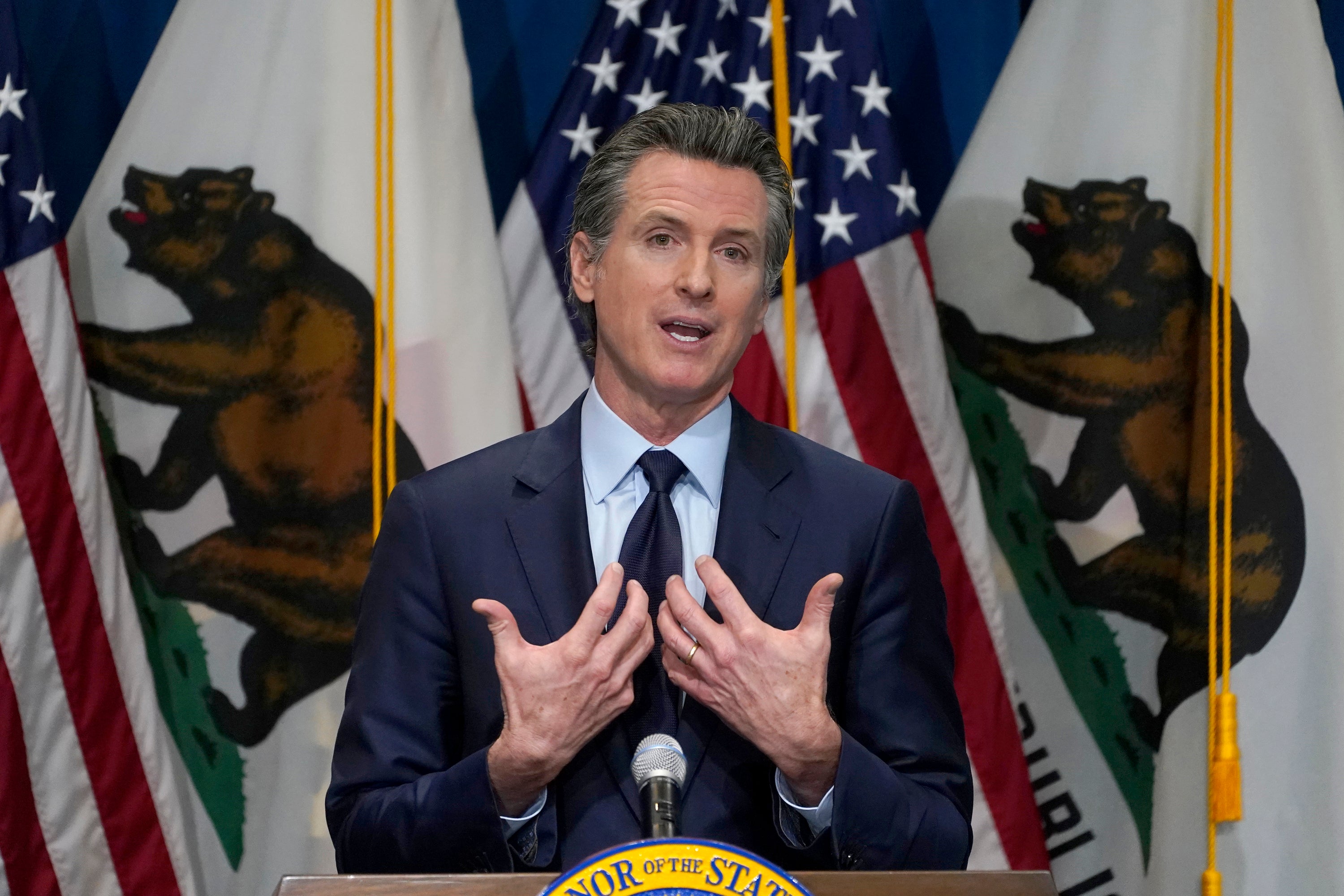EXPLAINER: Why is California Gov. Newsom facing a recall?
California Democratic Gov. Gavin Newsom is facing a likely recall election this year that threatens to remove him from office

California Gov. Gavin Newsom is facing the possibility that he could be removed by voters in a recall election in the midst of his four-year term. Organizers appear to have sufficient petition signatures to place the election on the ballot, and the vote would likely take place later this year. Here’s how it works:
WHAT IS A RECALL ELECTION?
California is one of 20 states that have provisions to remove a sitting governor in a recall, 19 through elections. The state law establishing the rules goes back to 1911 and was intended to place more power directly in the hands of voters by allowing them to recall elected officials and repeal or pass laws by placing them on the ballot. Recall attempts are not uncommon in the state, but they rarely get on the ballot and even fewer succeed. Unpopular Democratic Gov. Gray Davis was recalled in 2003, then replaced with Republican Arnold Schwarzenegger.
WHY IS THERE A RECALL DRIVE AGAINST DEMOCRATIC GOV. GAVIN NEWSOM?
The answer is both simple and complicated.
The simple part: Californians are angry. A year of whipsaw pandemic lockdowns, crushing job losses from business closures, shuttered schools and the disruption of daily life has soured just about everybody. Many of life’s routines were cut off at some point if not altogether, whether trips to the beach or lunches at a favorite burger joint. The complicated part: In a state with nearly 40 million people, there are many grievances, from California’s wallet-sapping taxes to a raging homelessness crisis that continues unabated despite billions in spending. Newsom, given his role as governor, has become the target of that resentment.
He's also being hit by the fallout from a multibillion-dollar fraud scandal at the state unemployment agency while weathering a public shaming for dining out with friends and lobbyists at an exclusive San Francisco Bay Area restaurant last fall, while telling residents to stay home for safety.
Newsom, who was elected in a 2018 landslide, sees the recall as an attack on California's progressive policies. Republicans see a rare opportunity to unseat a Democrat in a state where the GOP hasn't won a statewide election since 2006.
WHERE DOES IT STAND?
Supporters of the recall are required to gather 1,495,709 petition signatures to authorize the election. The deadline to submit those signatures is Wednesday and organizers say they have collected over 2 million signatures, though many of those remain under review by election officials. Even so, Newsom kicked off his campaign to defeat the recall this week, acknowledging the election was all but inevitable and labeling its organizers as political extremists loyal to former President Donald Trump The recall is backed by state and national Republicans but organizers argue they have a broad-based coalition, including many independents and Democrats.
County election officials have until April 29 to verify the signatures.
WHEN WOULD AN ELECTION BE HELD?
There is wiggle room in the law and numerous steps along the way, but if supporters collect sufficient signatures, it’s likely to be in the fall, possibly in November. The date might not be finalized until September.
HOW DOES THE ELECTION WORK?
Voters would be asked two questions: First, should Newsom be removed, yes or no? The second question would be a list of replacement candidates to choose from, if voters recall the governor.
HAVE ANY POTENTIAL REPLACEMENT CANDIDATES ENTERED THE RACE?
Yes – Kevin Faulconer, the former Republican mayor of San Diego, Republican businessman John Cox, who was defeated by Newsom in 2018, and former Republican congressman and businessman Doug Ose have entered the race. Another name being discussed in GOP circles is former President Donald Trump’s then-acting director of national intelligence, Richard Grenell who has not responded to requests for comment on a possible candidacy.
WHAT IS NEWSOM SAYING ABOUT THE RECALL?
For months, Newsom waived off questions about a possible election that could remove him from office, saying he wanted to focus on the coronavirus, vaccinations and reopening schools. But he's now shifted into an aggressive campaign strategy, fundraising, running an ad attacking the recall and doing national TV and cable interviews. He has acknowledged that people are anxious and weary after a difficult year dealing with the virus and restrictions. But he argues that the recall is not about the virus response, but an effort by political extremists on the far-right fringe of the GOP to push him from office.
HOW MUCH POLITICAL RISK IS NEWSOM FACING?
If petition numbers hold up, it appears the recall will easily qualify for the ballot. If that happens, Newsom would be forced to fend off rivals in the midst of a pandemic that has cost the state millions of jobs and shaken life for residents. But time could be on his side and the turbulent public mood could shift by fall, if schools, restaurants, gyms and other businesses continue to reopen. California also is one of the most heavily Democratic states in the country: Democratic voters outnumber Republicans by nearly 2-to-1, and the party controls every statewide office while dominating the Legislature and congressional delegation.